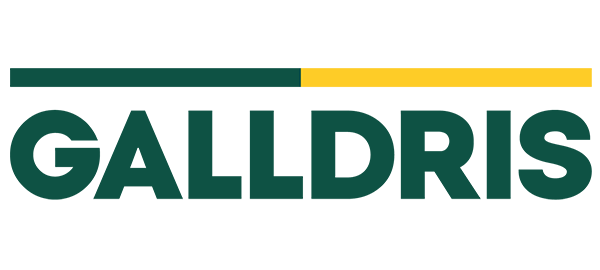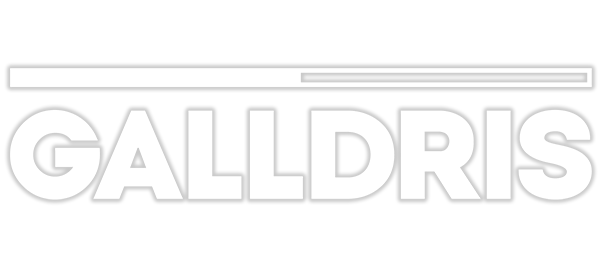Health and Safety Code of Conduct
The board of Galldris is committed to achieving high standards in Health and Safety across all its operations. The Board accepts it has a collective role in providing Health and Safety leadership in its organisation. Similarly, all Directors and Managers are expected to demonstrate high standards in Health and Safety Leadership by applying this code of conduct.
Our Health and Safety policies are displayed on notice boards and they are available on your workstation and shared server. Please take the time to read and understand them fully. This code of conduct requires that those people who work on Galldris sites, both Galldris employees/staff and or subcontractors, should recognise the importance of Health and safety to themselves and those affected by the work on the site. This code of conduct is about your behaviour when you are on site and how others percieve and learn from your leadership.
Your Role is Important
The contribution you make by your conduct on our sites is regarded by Galldris as being of the highest importance. Your positive approach to this code of conduct will have a major positive influence on others. At the same time, this code sets out ways in which you can let us know if you think that we are not meeting the high standards that we are setting ourselves.
Please make a positive contribution – not a negative one.
Leadership: Directors and Managers
All Directors and managers of Galldris and subcontractors are to show leadership by complying with the following:
Setting Standards
Managers and Directors are accountable for setting a high standard of safety behaviour within their own teams. At all times they should lead by example and comply with all legal safety requirements that apply to a particular site.
Taking action and decision making
If managers and directors see poor safety practice, then they should step in and take positive action to correct the situation. All actions and decisions at work must always reinforce the message in the company’s health and safety policy statement.
Listening
Directors, managers and supervisors will listen to views expressed on health and safety issues. Problems can be solved locally or through the established set of health and safety management meetings and reviews.
Supervisors
Setting Standards
Make sure your personal standards of health and safety are high at all times, lead by example and comply with all of the safety requirements that apply to a particular site. Supervisors of Galldris are to be identifi ed by wearing black hats. Supervisors are to observe standards of workplaces and to listen to comments or complaints which are then to be taken seriously and dealt with in a courteous and professional manner.
Everyone including Directors, managers and Supervisors
Everyone is expected to comply with the following:
Influence of Workmates
We should all try to set a good example. Do not allow your workmates to lower standards of Health and Safety. If you see someone working unsafely on any of our sites you must report the situation to a supervisor.
Co-operation
Co-operate with your colleagues, the public, the Health and safety Executive and any other stakeholders involved in or affected by the works.
Discrimination and Harassment
Do not discriminate against or harass any of your work colleagues. Always consider how your behaviour will be viewed by the person or people you are dealing with.
Competence and Training
You must be trained to do the work you are asked to do. Make sure your certificates are current. Also make sure you get all the information you need. You should get toolbox talks, risk assessment information, method statements and where appropriate permits to work and lift plans. Do not work without receiving this information and be prepared to ask if you do not fully understand.
Personal Protective Equipment (PPE)
Make sure you wear the correct protective equipment provided. Your employer will explain what equipment is required, how it should be used and how it should be maintained as a part of the risk assessment/ method statement for your work. Ensure that the correctly rated equipment is selected for the task. For example goggles, masks and ear defenders are rated differently according to the severity of the exposure.
Sticking to the rules
Stick to the rules and procedures that have been explained to you. If you think the rules and procedures are either impractical or could be improved, report your comments to your manger or supervisor. Do not be tempted to improvise – you may be increasing the risk to yourself and others.
Permits to work
A permit to work may be issued for some critical work. If you are not sure, ask your supervisor. Do not carry out work that requires a permit without obtaining the permit first- even if the task involved will take only a few minutes. The permit will be issued for the safety of yourself and others. It is very important that you comply with the stated requirements.
Emergency plans
All offices and sites have an emergency plan. Make sure you know what it is through site inductions.
Using Mobile phones on site
Mobile phones are an important aspect of modern management. However, when you are on site, you must be alert to what is going on around you. If you need to use your phone, check that you are in an area where it is safe to do so.
Pressure of work
If deadlines are looking tight- do not take short cuts. Obviously, it is preferable for work to finish in accordance with the program, but the best way to achieve this will be by good planning of the work before you start. Make sure the health and safety aspects have been assessed and you know the results of the assessment. Make sure you have been issued the risk assessments, the method statements and personal protective equipment before you start. Do not do any unplanned work. Many accidents occur whilst doing work that has not been thought through properly.
Stress
Working in a planned way reduces stress. Fewer problems arise and there will be an improvement in the working environment for all. If you believe that you, or a colleague, are suffering from stress, you are encouraged to discuss this with your manager.
Communication with the Management
Every site must have arrangements in place for the workforce to communicate with the management and supervision. This is usually in the form of a health and safety committee and you are encouraged to get involved. Also, if you spot an unsafe act or condition then please inform your manager or supervisor so that something can be done.
Working long hours and tiredness
Generally, you should not work more than 48 works per week to comply with the health and safety regulations. You can opt out of this by signing the appropriate form and giving it to your employer. However, you should note that working long hours causes tiredness and can cause accidents. Do not let tiredness reduce your alertness at work. It is your duty to comply with the companies fatigue management policy which was briefed during site induction and displayed in office.
Employee / Staff Assistance
At any time, day or night, the directors and management are at your service. Management are experienced to deal with countless types of problems, worries and concerns. No matter what kind of problem it is the sooner you seek some help and advise the sooner it can be dealt with.
Disciplinary action
Sometimes things go wrong. You will not be disciplined by the company as long as you comply with Company policies and procedures. Any information provided that helps to understand the circumstances of an incident and thereby helps the company improve its performance, will be treated in total confidence. Disciplinary action will be taken against any person who does not comply with Company Policies or Procedures. So please make sure you read and understand them.


